Most waterfowlers have a go-to duck hunting load. If you don’t, here are three tips to get you there. The “best” load for harvesting waterfowl is debated about as much as .45 vs. 9mm or GLOCK vs. 1911. I’d rather spend that time shooting than debating.
Years ago I experimented with a variety of options and settled on Federal Premium’s Black Cloud. It’s good enough to give me confidence in the field through plenty of consistently accurate and deadly bird hunting trips. So it became a staple of my duck hunting kit and I haven’t had to think about ammo since.
If I’d had any lingering doubts about the load, they were put to rest during a Christmas Eve duck hunt when I quick-shot a large female coyote in the face with a three-inch #3 shot Black Cloud load. A single shot at thirty-five yards threw her tail over her ears and she was done. I knew then that if I ever shot at a duck with this stuff and it didn’t fall out of the air, it was most certainly my fault.
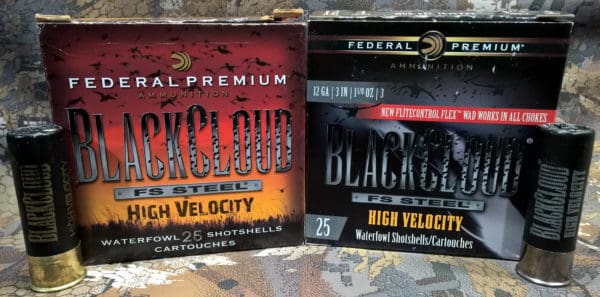
After the regular 2016/2017 waterfowl season closed up here in Washington State, Federal Premium announced the upcoming release of a redesigned line of Black Cloud shot shells. Federal made several claims about the new and improved cartridges, including:
• A black nickel head that inhibits corrosion
• Sealed crimping to defeat moisture in extreme conditions
• Catalyst™ lead-free primer and clean-burning, temperature-stable propellant to drastically reduce residue
• A payload of 40 percent FLITESTOPPER steel pellets and 60 percent Premium steel for dense patterns and larger wound channels
• A rear-opening FLITECONTROL FLEX wad that provides the tightest patterns possible through both ported and standard waterfowl chokes
Near the end of the summer I got my hands on a case of the new Black Cloud High Velocity (1635 fps) 3″ #3 1 1/8-ounce steel shot shells (PWBXH143-3) and began comparison testing versus the previous version of the same load. I hit the range first and then rolled right into duck and goose season without a hitch.
About half-way into the Washington State waterfowl season now, I’ve already worked my way through that first case, filling one freezer with mallard which I eventually turned into duck jerky. It’s clear to me that Black Cloud still gets the job done, but let’s look at each of those claims . . .
Ladies and gentlemen, black nickel is officially the new brass for waterfowlers. Black Cloud ditched the quickly corroding and color-changing brass head and capped the hull with a material that holds up better against the elements (and doesn’t reflect sunlight quite as brightly). After soaking a box or two of shells in water and letting them sit for a few days before drying them out, the difference was night and day.
I never thought the brass on shot cartridges flared ducks or geese (colored hulls, maybe). With Black Cloud’s black head / black hull combo…that just isn’t going to happen. In fact, you’ll be hard-pressed to spot them unless they magically land in a neat little pile or the floor of your blind.
Also notable is the new headstamp, which I find interesting. They’ve pulled down the “Made in USA” banner (above, left) and put up the Federal flag (above, right). Does this mean the ammo is no longer produced here in the Land of the Free? Nope. Federal Premium Black Cloud is still “Assembled in US from US and foreign components.”
One qualm I had with the old Black Cloud was that the crimps would often dome up above the rim of the crimp. Federal has fine-tuned its crimping presses to deliver a better, more consistent crimp in the new version (see above).

My only real complaint about the old Black Cloud was how damn dirty it was. It was bad enough that one shot would leave more unwanted material in your barrel and action than shooting four lines (100-120 shots) of 5-stand with Federal trap loads. I actually contacted Federal Premium on the matter – twice.
With the new Black Cloud, Federal has made a change to a more clean-burning propellant and the difference is noticeable. The new powder (above right) does indeed burn cleaner, leaving far less gunk to swab out of your scattergun after a day in the field. From video footage I’ve seen, it also appears to have a less “sparky” ignition.
After emptying and counting a box of both the old and new cartridges — yes, I really did that — I found the new Black Cloud has an average of 164.8 pellets per cartridge versus 161.4 in the old version. The new load held an average of 63.8 pellets of FLITESTOPPER and 101 pellets of Premium steel, versus 60.2 FLITESTOPPER and 101.2 Premium steel in the old loads. A negligible difference, but there it is.
There was also a negligible 1% ratio difference between the loads. The new Black Cloud (above, right) averaged 38.7% FLITESTOPPER and 61.2% Premium steel pellets, while the old cartridges averaged 37.3% FLITESTOPPER and 62.7% Premium steel pellets.
Both new and old Black Cloud averaged slightly over 1 1/8-ounces of total payload.
In my experience FLITESTOPPER steel pellets do fly differently than the Premium steel pellets, tending to move to the outside of the shot pattern. Their halo most certainly does more damage, but can also quickly ruin a good duck breast.
One final obvious change to the new version of Black Cloud is the absence of polymer filler mixed-in with the pellets. The old loads had an average of 26.8 pieces of filler, equaling 1.42-grams per cartridge. This may account for the loss of 1.5-ounces per box of twenty-five cartridges.
The most significant improvement in the updated release of Federal Premium Black Cloud is the redesigned FLITECONTROL FLEX wad (above, right). The original wad (above, left) included pedals that opened against the direction of travel. I believed they worked well – unless I used them with a ported choke tube.
After reports that the pedals weren’t playing well with ported chokes, Federal has removed the forward-facing petals and tweaked the rear-opening ones to retain the desired amount of drag without the risk of hang-ups.
Replacing the removed pedals are side vents that encourage the payload to exit the wad during travel. The new wads have been landing between thirty-five and forty-five yards past the muzzle shot during range and field testing, which is right in-line with the old wads.
At the range I ran both the old and new Black Cloud HV through two auto-loading shotguns – a super-clean Benelli Super Black Eagle II with Benelli Crio Pass extended choke (light full) and a dirty-as-hell Stoeger M3500 with factory improved cylinder choke. At a distance of 30 yards an 18″ x 24″ sheet of paper with an 18″ circle was tacked-up to pattern each shot. The results are insightful.
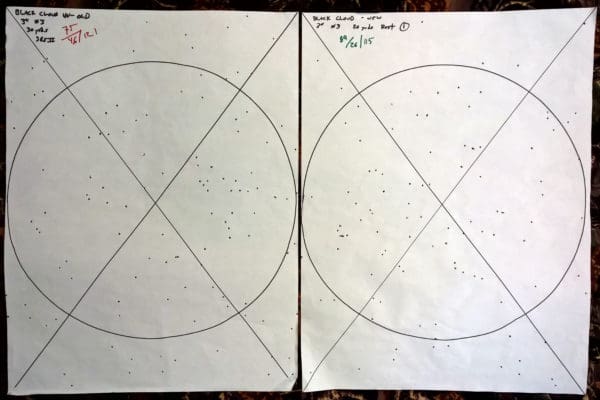
When fired through the Benelli Super Black Eagle II with the extended choke, both new and old loads averaged exactly the same number of pellets inside the circle (67.83 / ~58% of total payload). However, on average, the new Black Cloud put a few more pellets on the paper outside the circle (36.33 / ~22% vs. 32.67 / ~20%). This may not seem like much of an improvement, but when you take into account the aftermarket choke is working to deliver a more consistent pattern across all loads, the results are very positive.

Stoeger’s M3500 with factory improved cylinder choke was the real test. On average, the new Black Cloud landed 19% more pellets inside the circle (61 / ~37% vs. 49.6 / ~31%) and nearly the same amount on paper outside the circle (30.6 vs. 31 / ~19%). Especially given the use of an IC choke for this test, those are notable results that can make a difference in the field.
Of the 225 shells I fired, I experienced only one failure, a stovepipe failure to eject, which is more likely the shotgun’s fault. Still, I couldn’t help but notice more than a few cartridges with excess bonding/sealing agent across the length of the hull. Burning-off this material time and time again in your bore could lead to ejection issues.
In the field, Federal Premium Black Cloud High Velocity still delivers devastating kill shots. It folds ducks like flapjacks over sausage links, regardless of which shotgun it’s paired with. My personal goal for every duck hunt is to bag my seven-bird limit with seven shells and I’ve found Black Cloud to be a very reliable tool for the challenge.
Stepping back for a minute, I believe that the two primary driving factors that influenced Federal Premium to make changes were the wad issues with ported choke tubes and the overly dirty charges. After several months of testing, Federal Premium has adequately addressed both of these issues (while adding a few other marginal improvements) without sacrificing the effectiveness of the load. Federal’s improved Black Cloud High Velocity 12-gauge loads remain an excellent choice for waterfowlers and one I’ll be sticking with for seasons to come.
Specifications: Federal Premium Black Cloud High Velocity 12-gauge Shot Shells
Price as reviewed (MSRP): $27.95/box (25 cartridges)
Specs as reviewed: 3″ #3 1 1/8 oz.
Ratings (out of five stars):
Consistency of cartridges: * * * * *
These are high quality cartridges with consistent, reliable features that instill confidence in the shooter.
Pattern density and consistency: * * * *
Black Cloud has always maintained great shot patterns. Not the best pattern, mind you, but one that’s equal to its price point. The new version is just as good as the old, but there’s still some room for improvement there.
Cleanliness of charge: * * * *
The old Black Cloud was a filthy load due to its high rate of speed. Federal has addressed that issue by opting for a new propellant that burns much cleaner.
Effectiveness: * * * * *
Lead is the most effective type of shot you can use, but that’s not an option for waterfowl hunting. There’s a boatload of other high-density materials that try to emulate lead’s performance and they all come with a high price tag. Steel is the most affordable alternative and Black Cloud’s FLITESTOPPER pellets make it one of the more effective options on the market.
Overall: * * * *
Federal Premium wasn’t trying to re-invent the wheel with this updated version of Black Cloud. They addressed the two most pressing customer complaints (wad petals and dirtiness) and tacked-on several other improvements without sacrificing performance. The result is an better cartridge that curious hunters can afford to experiment with and long-time users can continue to rely on day after day.





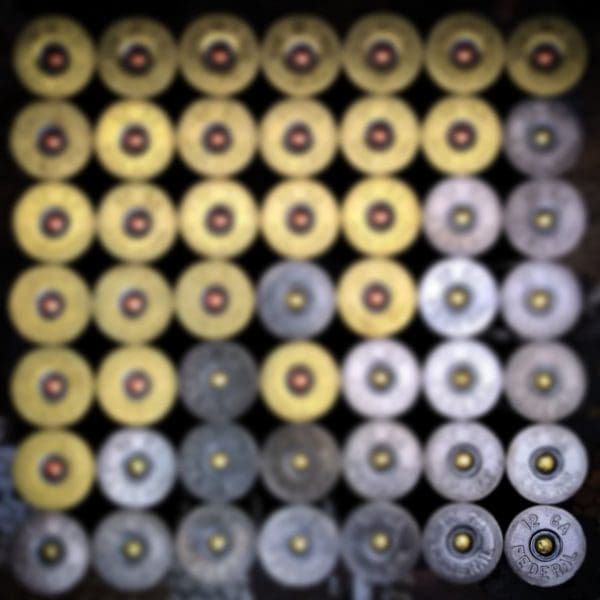

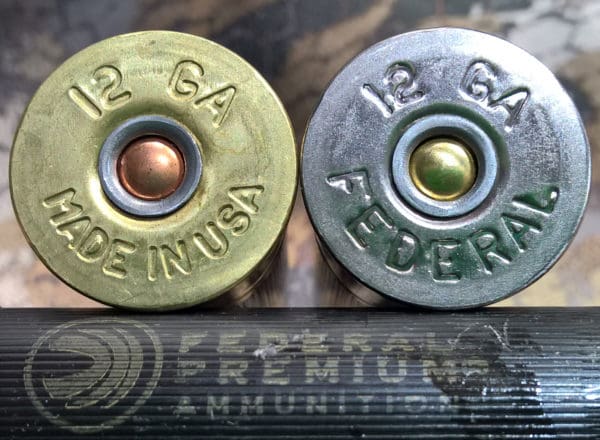

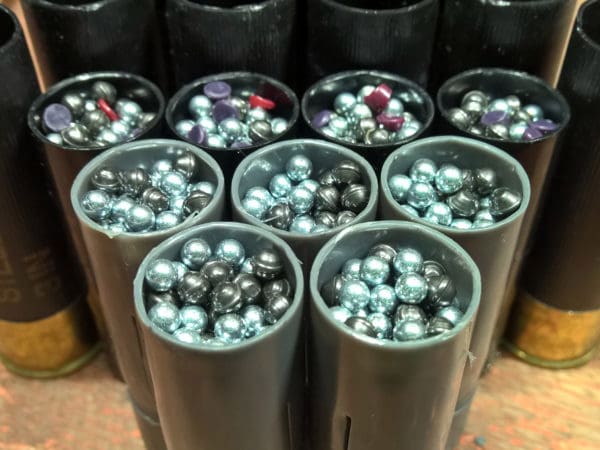
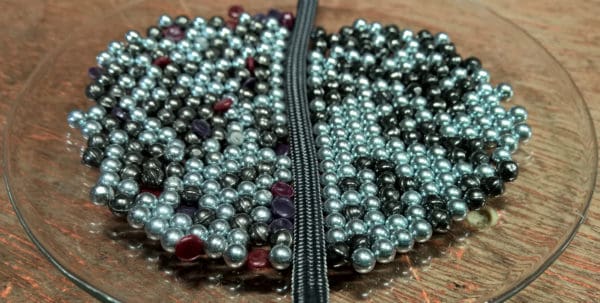
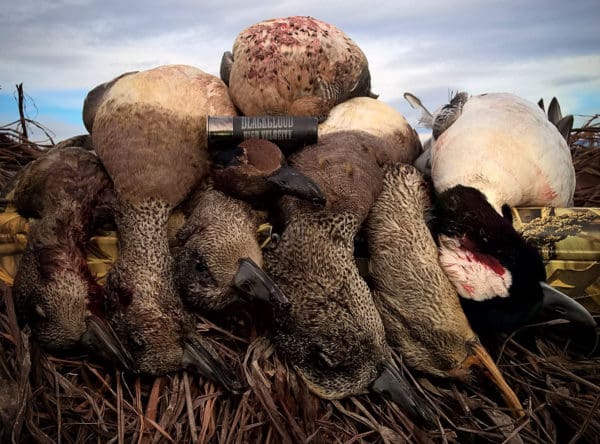

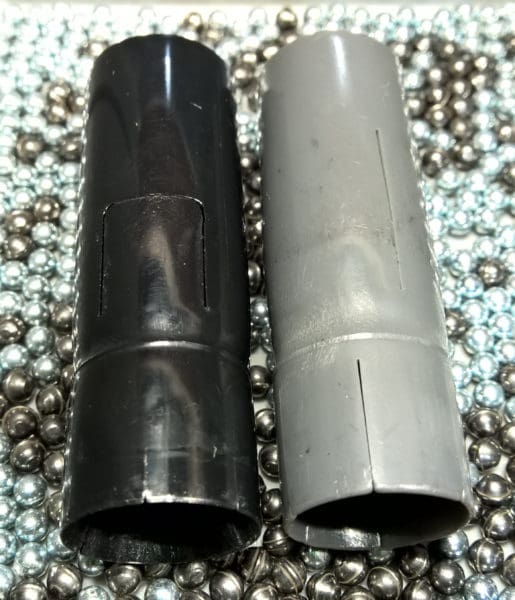

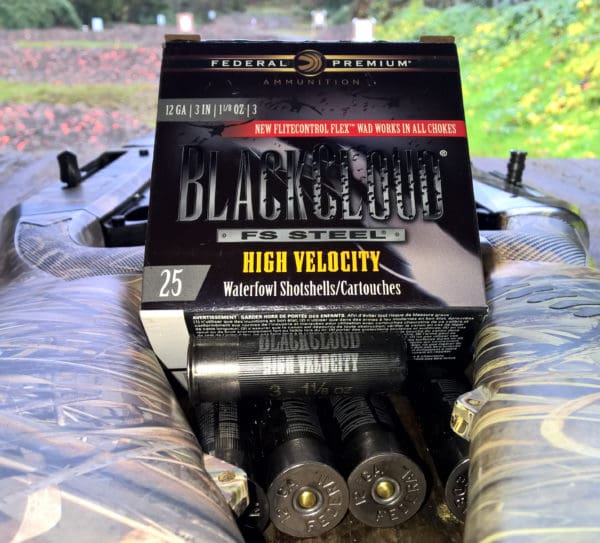
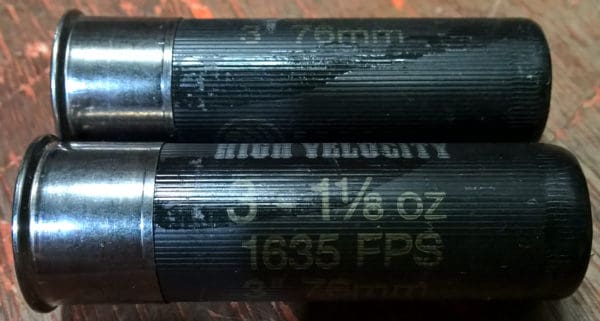
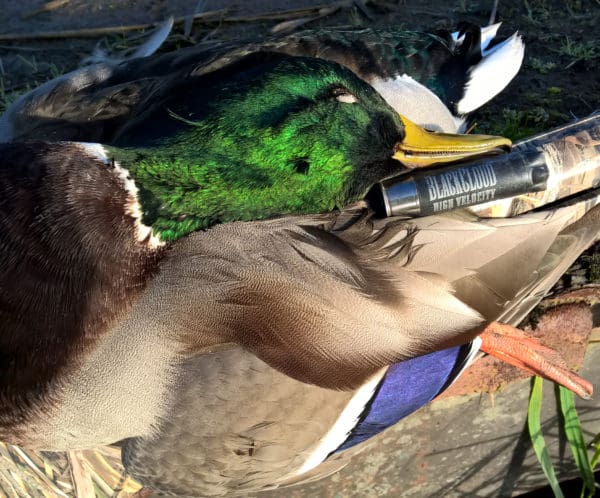
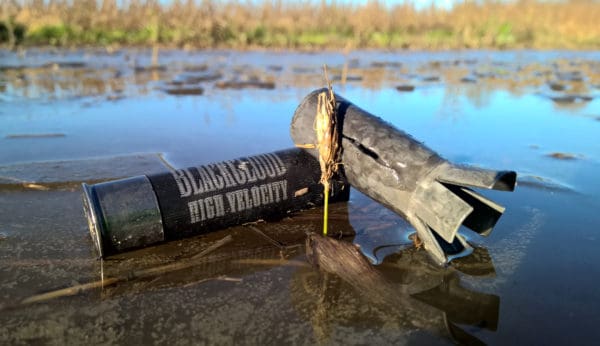



In the old days Winchester super mag number 4 lead for ducks 2 s for geese.
“Lead is the most effective type of shot you can use…”
Not true. There is more effective shot than lead such as Hevi Shot but lead is the for certain the most cost effective unless you get caught shooting ducks with it! Lead will be phased out for all hunting. I don’t agree with that but it is inevitable. At least the manufacturers have effective steel now. The first stuff that came out was a joke.
As a hunter, I’m in favor of non-lead ammo. Even if the evidence for lead being detrimental to wildlife is only partially correct, given all the other pressures wildlife and ducks, in particular, are facing from our modern world, I think all hunters should look beyond their own personal opinions and consider the longer term issues involved. And now that we have proven lead ammo alternatives at a reasonable price (although maybe not cheap), there is even less reason to resist what, as you point out, what will become inevitable.
I’m not some big lead industry proponent, but I still fear the outlawing or declining use of lead for ammo, simply for cost purposes, and the impact it will have on cheap, plentiful, rifle ammo. Shot shells are one thing, steel can be used for those. But most Rifle rounds cannot legally be made out of steel. Copper is great, but copper is expensive, and worldwide availibility of copper is on the decline, while demand is ever increasing, meaning at some point copper rounds are a no go. And as far as I know, the attempt at making nylon/composite or polymer rounds has also been a failure.
Started using Hevi X (Hevi Shot) this year and consistently ‘coming off the bench’ to finish birds that much better shooters can’t bring down. Who needs lead #NOTAQUESTION
I always carry a couple of 3 inch BB loads in my vest for that random yote encounter. I’m not a waterfowler. The shorter, lighter all steel loads work just fine for my upland bird style hunts. And they’re at least half the expense. I can get Winchester #7 steel for 7-8 bucks a box. Works just fine for quail and dove.
Lead is dead. I haven’t shot waterfowl since they banned it. No way will anything be better then lead in a rifle or handgun. Facts won’t change my mind.
“Facts won’t change my mind.”
At least ironcatbest is honest!
Comments are closed.